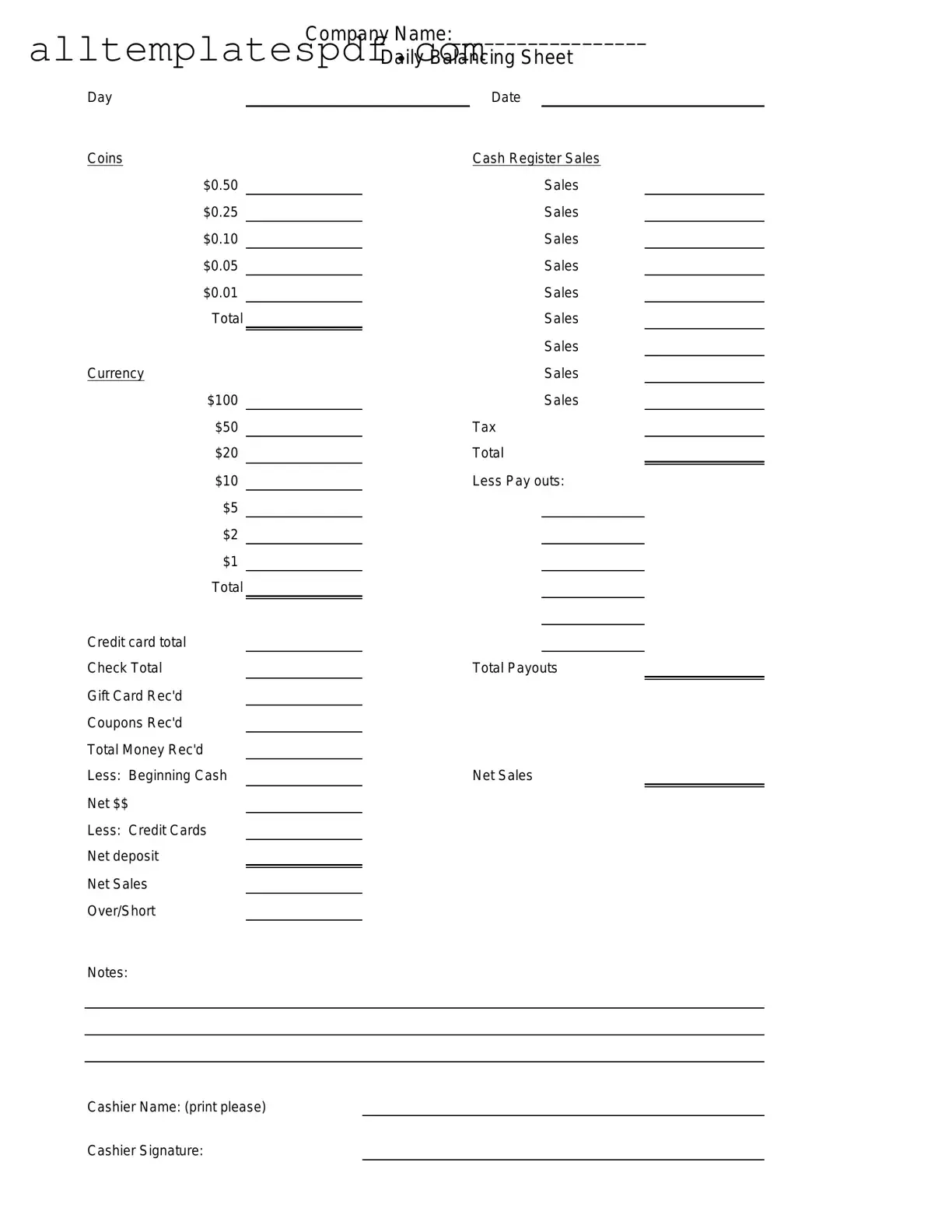Filling out a Cash Drawer Count Sheet form is a vital task for ensuring accurate financial tracking in a business. However, many people encounter pitfalls that can lead to errors. One common mistake is failing to double-check the starting cash balance. It’s crucial to record the correct amount at the beginning of the count. An inaccurate starting figure can throw off the entire count, leading to discrepancies that may be difficult to resolve later.
Another frequent error is neglecting to account for all cash transactions throughout the day. When cash is received or given out, it should be documented immediately. Omitting these transactions can result in an incomplete picture of the cash flow, causing confusion and potential financial loss.
People often forget to include coins in their count. While bills may be the focus, coins can add up significantly. Leaving them out can lead to a shortfall in the total cash amount. Always ensure that every denomination is counted and recorded accurately.
Inaccurate math is another common issue. Simple addition or subtraction errors can lead to significant discrepancies. It’s advisable to take your time and verify calculations. Using a calculator or a spreadsheet can help minimize mistakes in this area.
Another mistake involves not signing or dating the Cash Drawer Count Sheet. This step is essential for accountability. A signature confirms that the count was completed by a specific individual, while the date provides a clear timeline for record-keeping. Omitting this information can create confusion down the line.
People sometimes fail to store the completed form properly. Keeping the Cash Drawer Count Sheet in a secure location is crucial for future reference and audits. If the form is misplaced or damaged, it can complicate financial tracking and accountability.
Lastly, not reviewing the count with a colleague can lead to overlooked errors. A second pair of eyes can catch mistakes that might have been missed initially. Collaboration in this process not only enhances accuracy but also fosters a culture of transparency and teamwork.
